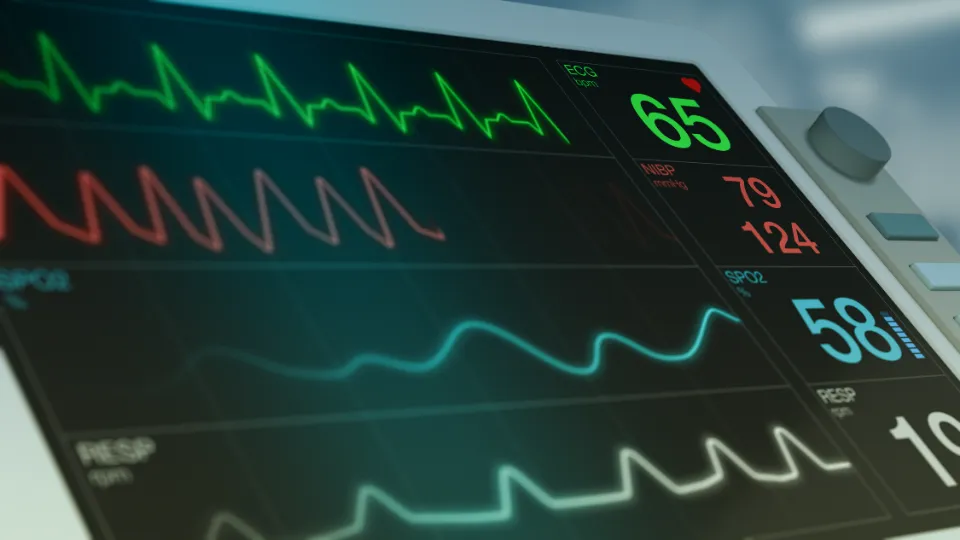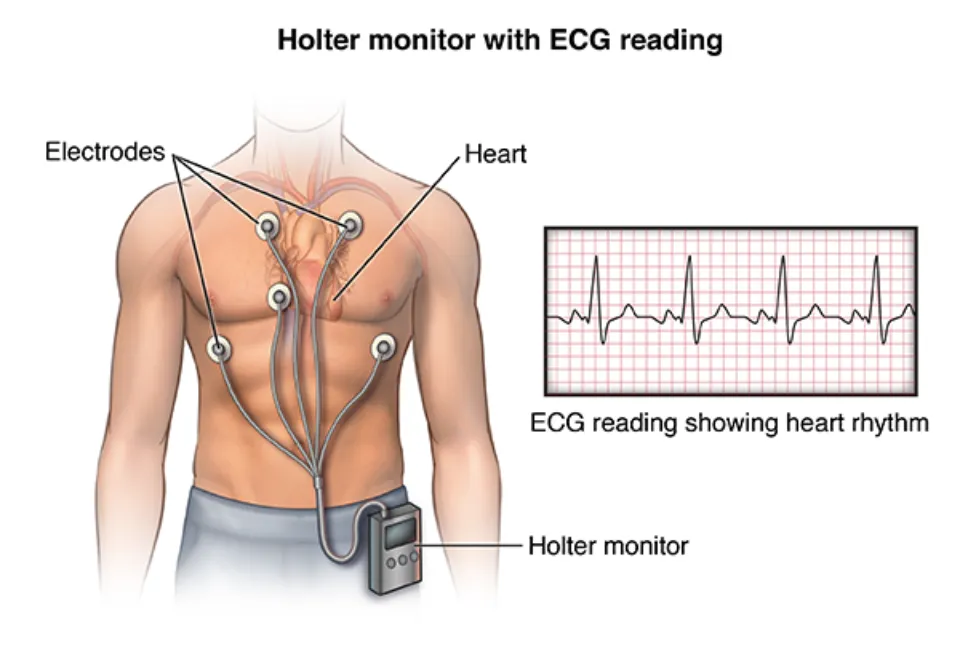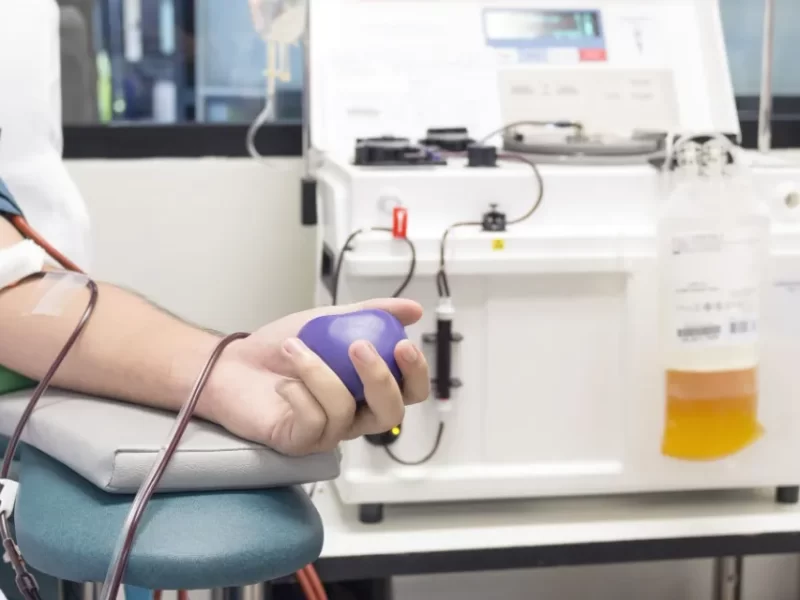Most of us spend some time relaxing and unwinding in the shower. But this can be a risky idea for people who have heart conditions. You shouldn’t use the shower to wash your chest in order to preserve your health.
You can continue to enjoy your daily activities while safeguarding yourself from any risks that may be associated with them by adhering to these straightforward rules. So how do you know how to take a shower while wearing a heart rate monitor? Fortunately for all of us, taking a few simple actions will assist in maintaining the health and happiness of our hearts.
What is a Heart Monitor?
A continuous reading of your heart rate and rhythm is provided to doctors by heart monitoring. Although they can be worn for up to 14 days, most monitors are worn for 24 hours at a time. While you are wearing the heart monitor, the device will continuously record your heartbeat and rhythm. You will be required to record your symptoms in a diary for your doctor to review as well during the monitoring period.

How Does a Heart Monitor Work?
The heart monitor is a tool for recording. Since they are so sensitive, these monitors can detect the electrical activity of the heart. The monitor records the impulses, providing your doctor with a recording of the electrical activity in your heart. Once the wearing period is over, you must return the monitor to the location where it was applied. There, we will download the data to an off-site monitoring service, which will print all the recordings and send them back to your doctor for analysis. Here at the office, we are unable to view your heartbeat in real time.
How Do Shower With a Heart Monitor?
Rinse Your Hair With the Monitor On
If you have fine hair and shampoo while taking a shower, this method will work best for you. Additionally, it works best if the shirt you’re wearing while showering is 100% cotton; do not attempt this on a shirt that contains a significant amount of cotton/polyester because the water will seep through and harm your heart monitor.
Shampoo Your Head First
The majority of your hair is on your head, so shampooing your head first will help it rinse off from your body as you run water over yourself. This implies that it will take more work to remove any shampoo residue from your body after washing it.
Use the Shower Head to Rinse
Some people enjoy applying soap or shampoo directly to their chests, but this is a bad idea because it could harm your heart monitor. The showerhead has a purpose! By doing this, you can stay out of direct contact with anything that might affect your heart rate readings.
Lather Your Arms First
Make sure to start with your arms when lathering up in the shower. This is due to the fact that the majority of shampoo, soap, and shower gel residue gathers on the lower half of the human body.
Use the Handrail
Utilizing the handrails in your shower is completely acceptable! After all, they are there for a purpose. Don’t be afraid to grab that rail if you struggle to stay balanced due to weak leg muscles or if you simply want more stability.

Use Waterproof Bandages
But what if I don’t want to cover my chest in bandages? In extreme circumstances where you are only taking a 10-second shower, waterproof bandages can be used.
Avoid using waterproof bandages if you take longer showers or have sensitive skin because they could come off and irritate your chest.
Use a Shirt With a High Cotton
If their shirt is cotton or has a high cotton blend, many people find it difficult to shower while wearing a heart monitor. This is due to water damage caused by seeping through the fibers and entering the heart monitor.
It won’t be a problem, though, to wear a shirt that contains less than 25% polyester.
Use Conditioner to Get Rid of Chlorine
If you frequently take showers, chlorine from swimming pools will likely be regularly exposed to your hair. If you have access to a conditioner, now would be a great time to use it because the water from the shower will rinse it off and wash any extra chlorine that might have gotten onto your hair.
What You Can and Can’t Do While Wearing a Heart Monitor?
What You Can Do
- Go about your daily business: You shouldn’t be prevented from living your life because heart monitors are made to be worn while patients are active. While wearing a Heart monitor, you can still go about your daily business, go to work, visit friends, and engage in other activities.
- (Light) Exercise: You can engage in low-impact exercises while wearing a heart rate monitor. However, keep in mind that harder workouts might skew the results of your heart monitor. The adhesive holding the electrodes in place may become loosened by frequent movement or excessive perspiration, which could affect the accuracy of your test results.
What You Can’t Do
- Get too close to high-voltage areas: Electrical interference could lead to inaccurate readings, necessitating a complete retest. Besides, common sense dictates you should probably avoid high-voltage areas even when you aren’t wearing a Heart monitor
- Get your Heart Monitor wet: Avoid bathing, swimming, and strenuous exercise that could make you perspire a lot. You can clean your body with wet wipes or soapy washcloths instead of taking a shower. When using wipes or washcloths, take care to avoid getting moisture on the monitor, leads, or electrodes.
- Get too close to strong magnets: Strong magnets can disrupt the electronics of the Heart monitor and skew your results.
- Use certain electronic devices: Your heart monitor test results may be distorted if certain devices interfere with the electrode signal. Avoid using electric blankets, electric toothbrushes, electric razors, and metal detectors. If a metal detector is required, proceed through it at a normal walking pace.
Summary
There are some options for monitoring if you want to know how your heart is doing while taking a shower. Although the features and cost of these gadgets vary, they all offer the same information about your pulse.
Of course, you want to make sure that all of the sensors are in contact with your skin, ideally from your chest all the way down to your waistband.
Please halt using the device until you can replace it if a sensor ever comes loose or comes off. You should be able to shower while wearing a heart monitor with relative ease if you use these easy methods!



